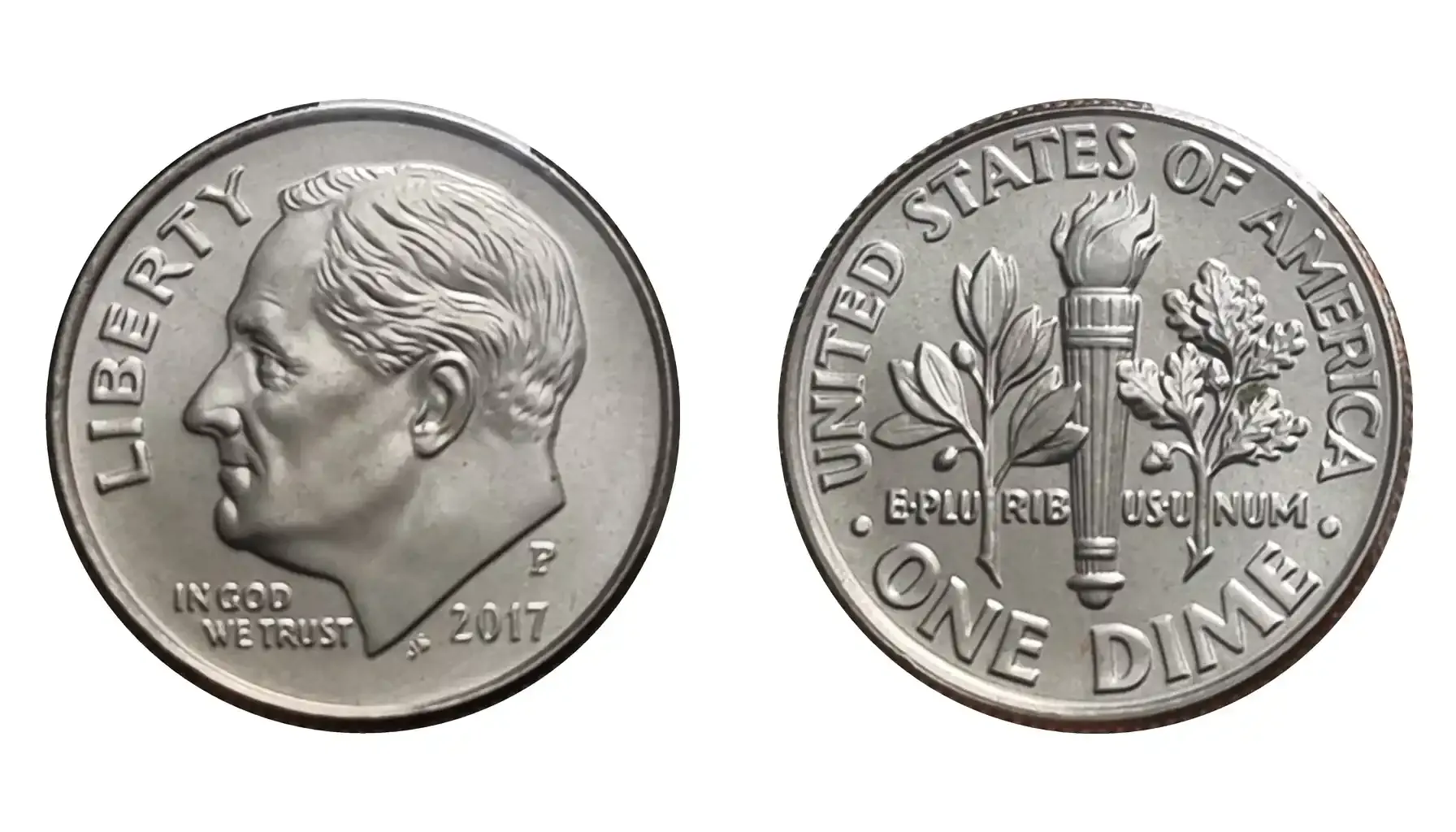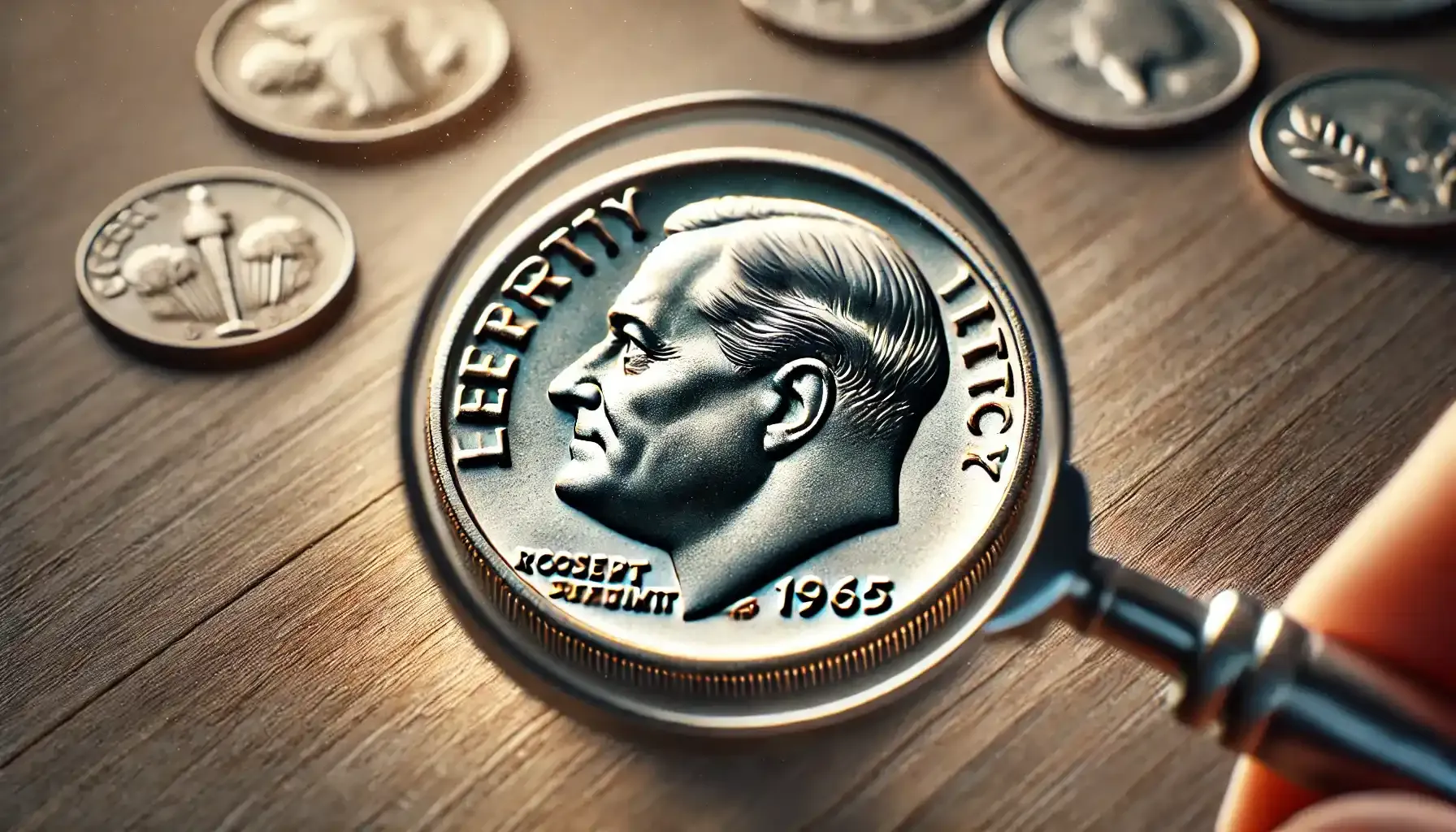Contents:
1965 was a long time ago, and representatives of new generations might believe that relics of that period have gone into oblivion. However, there exist timeless symbols that circulate and do not plan to disappear. Coins are of this nature, too. It was a time when massive coin hoarding and worldwide silver deficits compelled the US government to reevaluate its money-minting strategies and traditions drastically.
What is the current 1965 dime value? Why do collectors strive to obtain these instances so badly and obsessively? Let us turn to reputable coin identifiers and derive valuable information from those who are well-versed in this matter. Dimes in your hands – for collections in your hearts.

The Coinage Act of 1965
The landscape of numismatic in the XX was vivid and unstable to the point that were implemented numerous modifications, including the one under The Coinage Act of 1965. The Act, which was passed on July 23, 1965, addressed a severe silver shortage that was endangering the country's capacity to manufacture enough currency to satisfy rising demand. To put it simply, the rule aimed to prevent hoarding and speculation while guaranteeing a steady and dependable supply of coins.
Since the country's founding, silver has been a major component of American currency. Thanks to the rising price of silver and the growing demand for coinage in the prosperous 1960s economy, the 90% silver content of dimes, quarters, half dollars, and dollar coins was no longer sustainable. The intrinsic value of the 1965 dime silver content was becoming close to the face value, too, which was quite terrifying at that point.
As such, the Coinage Act of 1965 presupposed the complete removal of silver from dimes and quarters and the use of a layered copper-nickel alloy in its place. These new "clad" coins obtained a pure copper core with an exterior layer made of 75% copper and 25% nickel. And, so as to progressively lessen the public's attachment to silver coinage, the half dollar's silver content was also reduced from 90% to 40%, without completely going away from silver.
The 1965 Roosevelt dime, one of the first coins to be mass-produced with the new copper-nickel-clad composition, became a symbol of the shift. This assumingly insignificant modification had a significant impact, changing the physical characteristics of US currency and establishing a new standard for coinage regulations in the future.
The Main Features, Types, And Mintage Details of A Dime 1965
The key to the 1965 dime worth lies in its most obvious features, exposed on the surface. Let us briefly cover the major characteristics of the coin, explore its types, and delve into some notable varieties, too.
The Main Features of the 1965 Dime
Design
Obverse: John R. Sinnock, the Chief Engraver of the U.S. Mint, created a fine portrait of President Franklin D. Roosevelt that appears on the obverse of the 1965 dime. To the left of Roosevelt's image there can be seen the word "LIBERTY," and beneath his chin is placed the motto "IN GOD WE TRUST."
Reverse: The reverse features a torch with an oak and olive branch as the symbols of strength, freedom, and peace. "E PLURIBUS UNUM" is written between the branches, and the inscription "UNITED STATES OF AMERICA" is located around the upper rim. The denomination of one dime (i.e., ten cents) is mentioned here, too.

Composition
Material: With the 1965 dime, the composition changed from 90% silver to copper-nickel. It has two layers of 75% copper and 25% nickel encasing a core of pure copper.
Weight: 2.27 grams, as opposed to the previous silver dimes' 2.5 grams.
Diameter: 17.91 mm.
Edge: The coin's reeded edge, which was initially intended to protect from clipping and forgery, is still present.
No Mint Mark
In 1965, no matter what mint was responsible for the production of coins, dimes bore no mint marks so as to deter hoarding in the end. Therefore, all 1965 dimes were identical regardless of their mint origin.
Types of the 1965 Dime
Regular Strike: These instances were produced for general circulation, which is why they are the ones that are most frequently found on the market and outside.
Special Mint Set: In 1965, the US Mint also replaced traditional proof sets with Special Mint Sets (SMS). Compared to standard striking, these SMS coins had a better quality polish and a slightly mirror-like surface. Although SMS dimes do not have the deep, mirrored fields found in conventional proofs, they can be distinguished by their smoother surfaces and crisper features instead.
Mintage Details
In 1965, there were produced about 1,652,140,570 dimes. Though the coins did not have a mint mark, it is known that these were minted at the Philadelphia Mint. As for the Special Mint Set, the Mint released 2,360,000 Special Mint Sets during that year.
Notable Varieties and 1965 Dime Errors
Full Bands (FB): Dimes with fully struck horizontal bands on the torch's design are exceptionally desirable to collectors.
Clad Layer Errors: The outer layer of copper nickel on some 1965 dimes is either absent or partially peeled off, revealing the copper core. These mistakes are uncommon and, hence, highly prized by collectors.
Off-Center Strikes: Another 1965 dime error refers to the occurrence when the coin had partial design features due to off-center strikes. The degree of misalignment determines whether these minting defects add value or vice versa.
What Is a 1965 Dime Worth?
Is a 1965 dime worth anything? So as to answer this question, it is vital to understand its categorization. When in circulation, the 1965 dime is about its face value only. However, if the coin is uncirculated or has uncommon errors and modifications, its worth may rise. Distinctive characteristics are the key factors that matter.
Category | Description | Value |
Circulated Coin (VG to AU) | Standard circulated condition, with visible wear yet not heavily worn | $0.10 – $0.50 |
Uncirculated (MS-60 to MS-63) | Coins with no signs of circulation (minor flaws acceptable) | $1.00 – $3.00 |
Uncirculated (MS-64 to MS-65) | Coins with sharp details, high luster, and minimal defects | $5.00 – $10.00 |
High-Grade Uncirculated (MS-66) | Coins with excellent luster, sharp details, and minimal imperfections | $15.00 – $25.00 |
SMS (Special Mint Set) | Coins produced in sets, with a satin-like finish and better quality than regular strikes | $2.00 – $5.00 |
High-Grade SMS (MS-67+) | Special Mint Set coins with flawless quality and exceptional detail | $20.00 – $40.00 |
Off-Center Strike Error | Coins that are struck off-center | $10.00 – $50.00 |
Clad Layer Error | Coins where the copper-nickel layer is missing or partially peeled off | $100.00 – $300.00 |
Full Bands (MS-66 and higher) | Dimes with fully defined bands on the torch | $50.00 – $100.00 |
Double Die Errors | Coins showing doubling in design elements | $50.00 – $200.00 |
Proof-Like Coins | Coins with a near-mirror-like surface (not officially proofs) | $5.00 – $15.00 |
High-Grade Proof | The dime that was made especially for collectors with a mirror finish (only available in the Proof Set) | $10.00 – $20.00 |
Even though the 1965 dime is widely utilized in daily life these days, collectors value every coin when it satisfies certain requirements. As a result, coins with these unique characteristics have the potential to fetch higher prices in addition to documenting a significant change in US coinage.
Related article: Rare 2020 Quarters.
What’s Next? Your Pro Tip to Pick
Those who desire to discover the value of the 1965 dime and start their journey might want to seek assistance at any stage of their exploration. As we see the interest in digital tools, we would like to recommend an innovative application called Coin ID Scanner aimed to help coin lovers cope with their numismatic problems.
The most prominent feature of the software is quick coin identification by photo. The program rapidly examines a coin's shape, date, mint mark, and other distinctive qualities by simply using the camera on your smartphone to scan it. Soon after the scanning, the system compares this data with an extensive database of coins and then delivers up-to-date information on the coin's type, rarity, and current market value in accordance with its attributes and state.
Unlock the past, discover the value – the 1965 dime is your key to the numismatic adventure of the days long gone.



